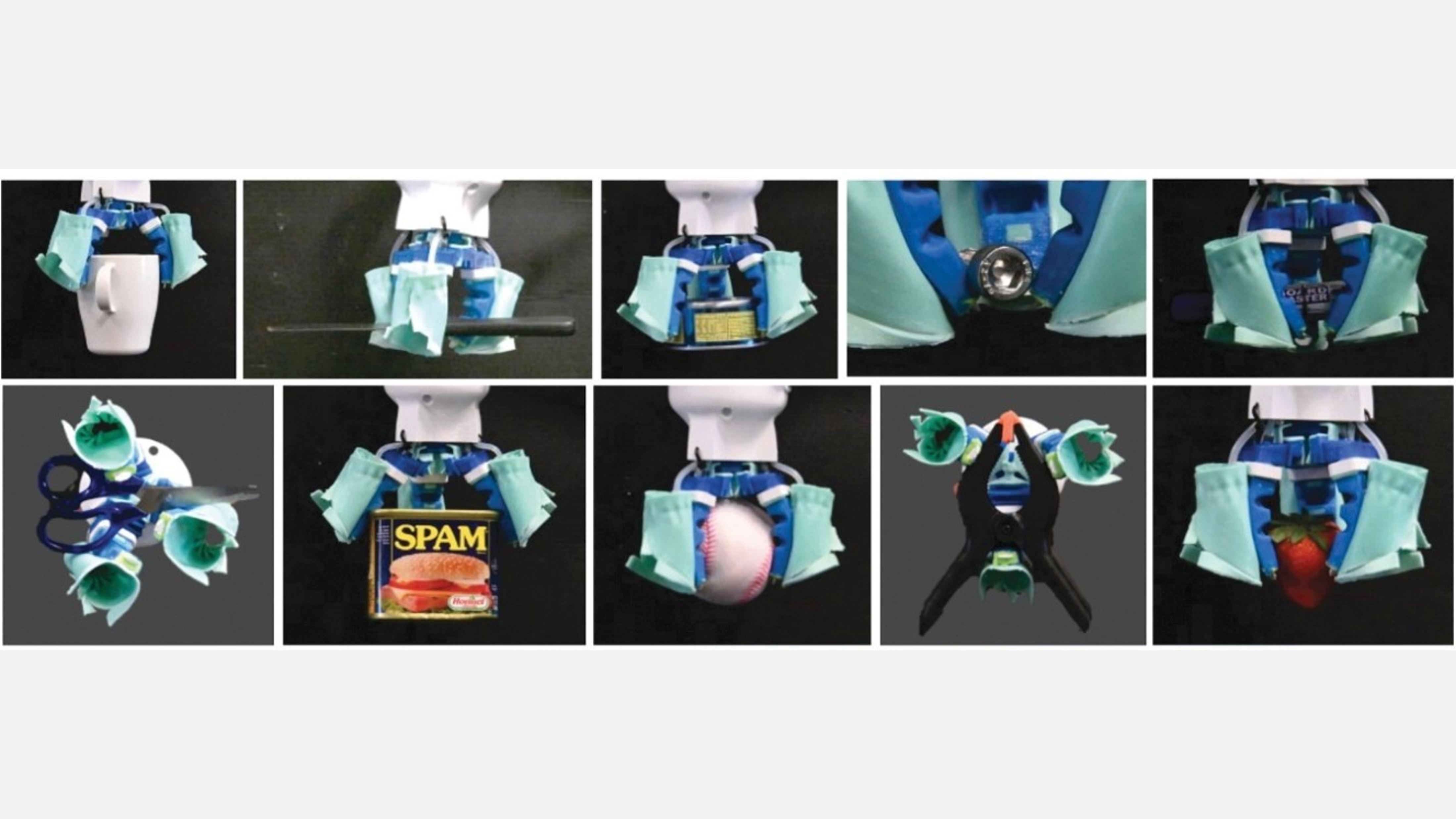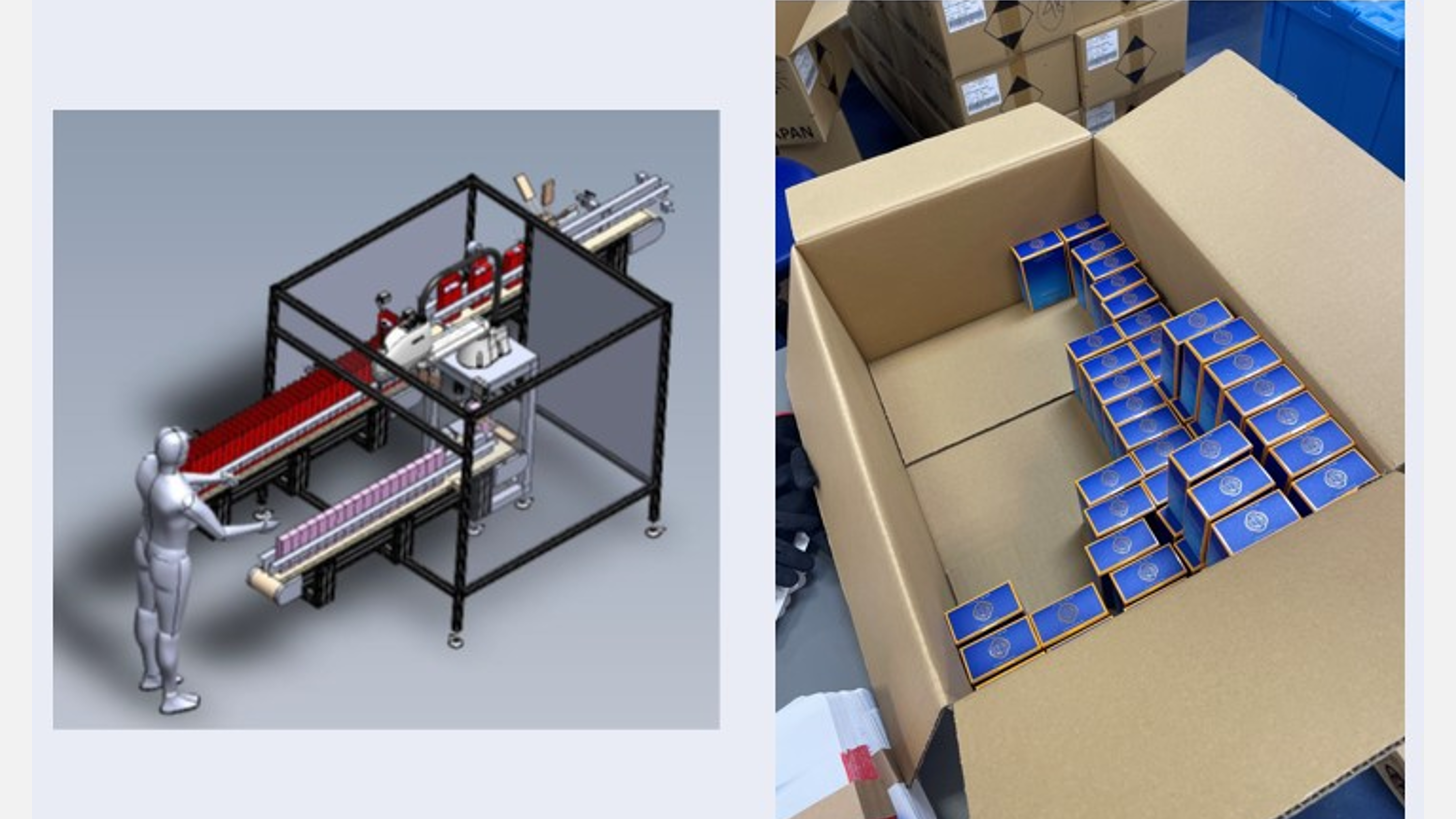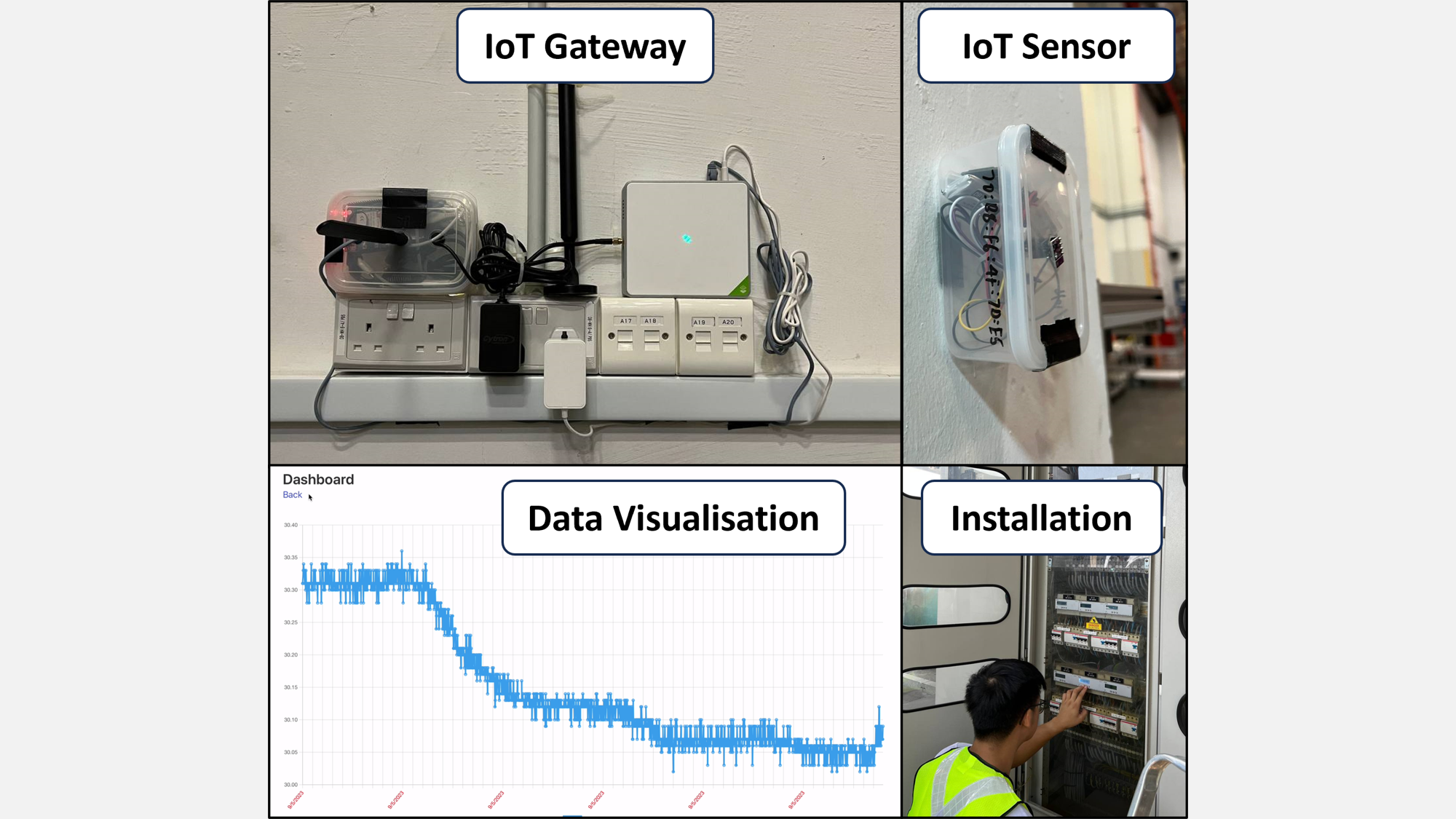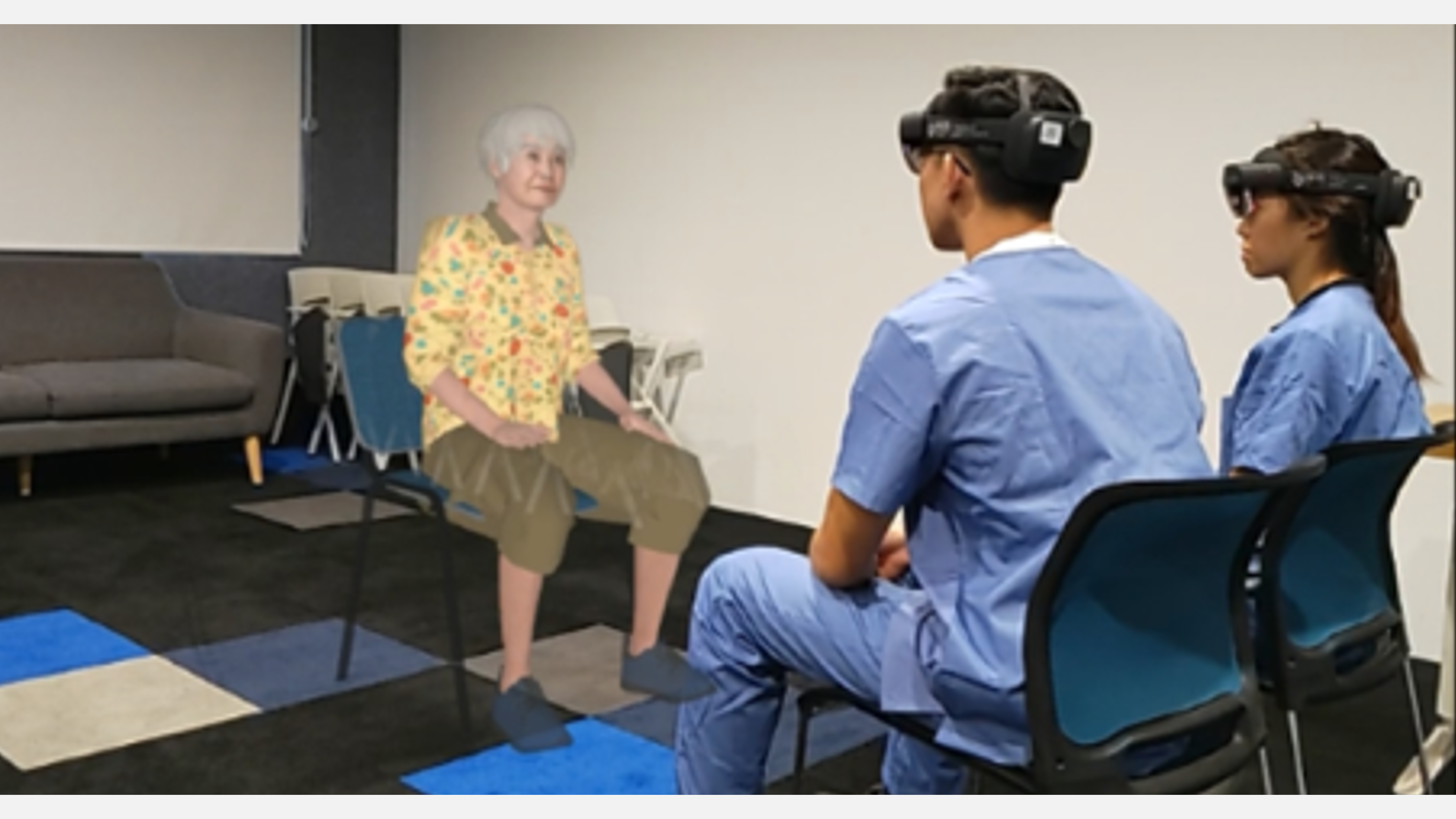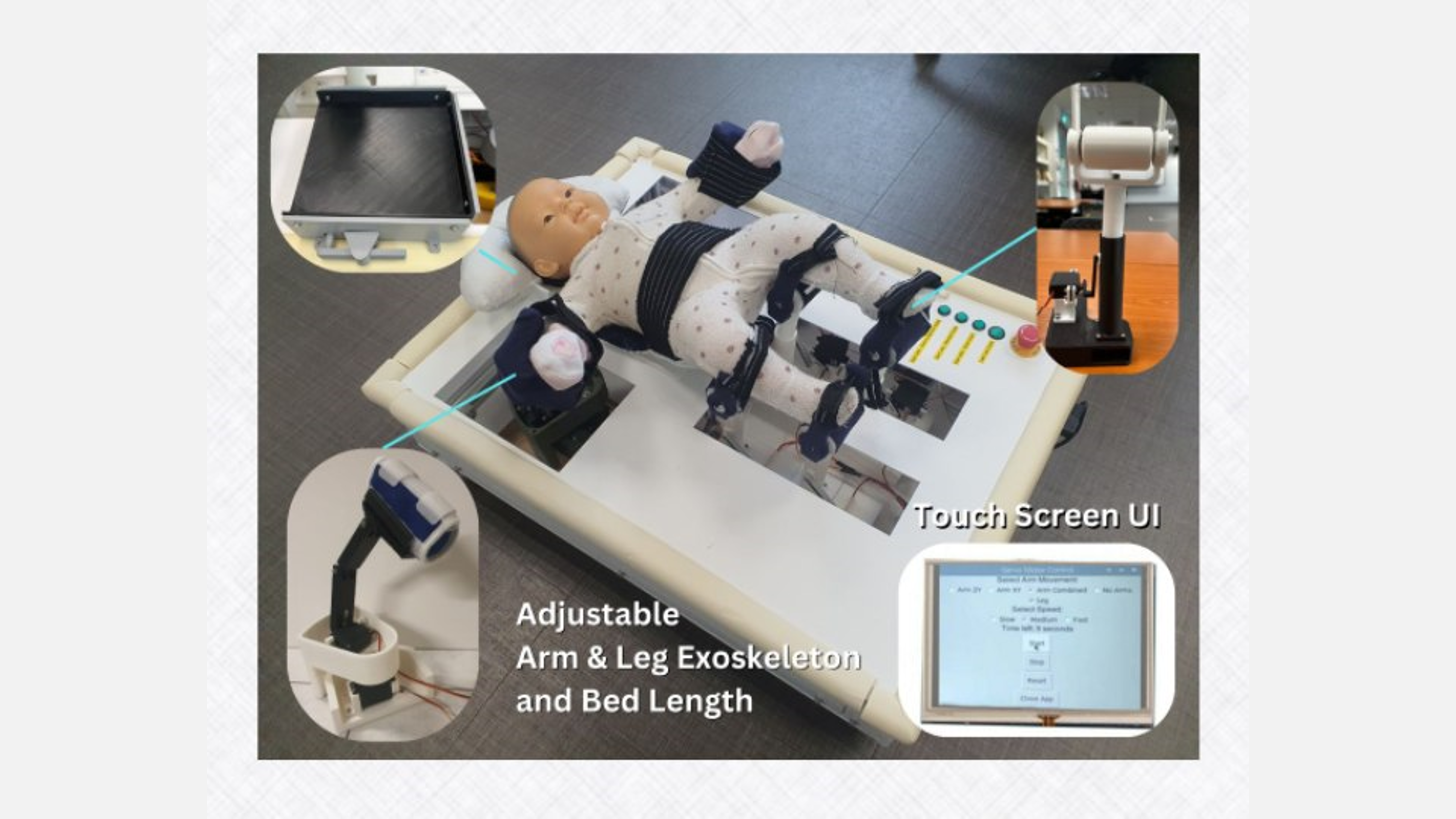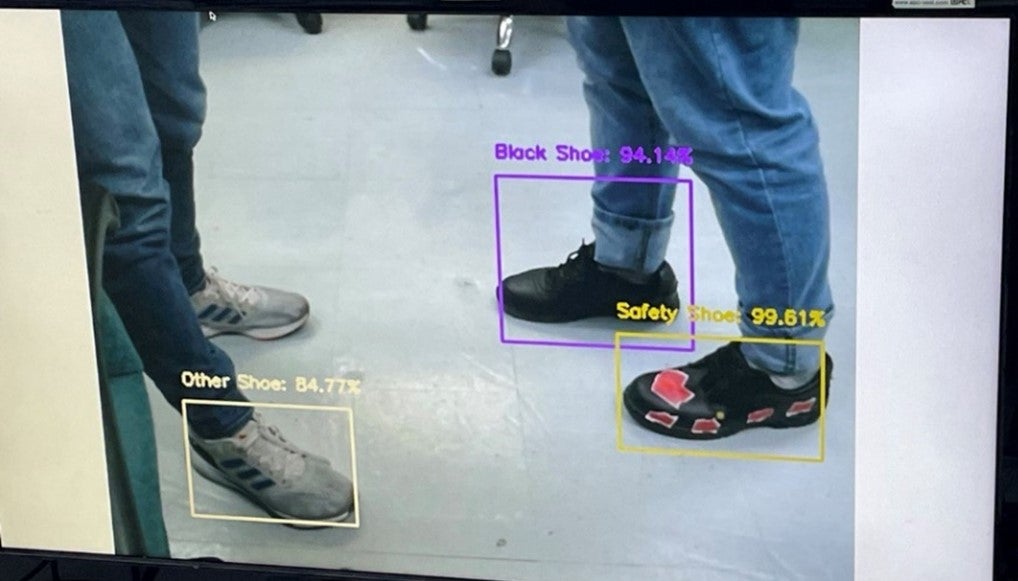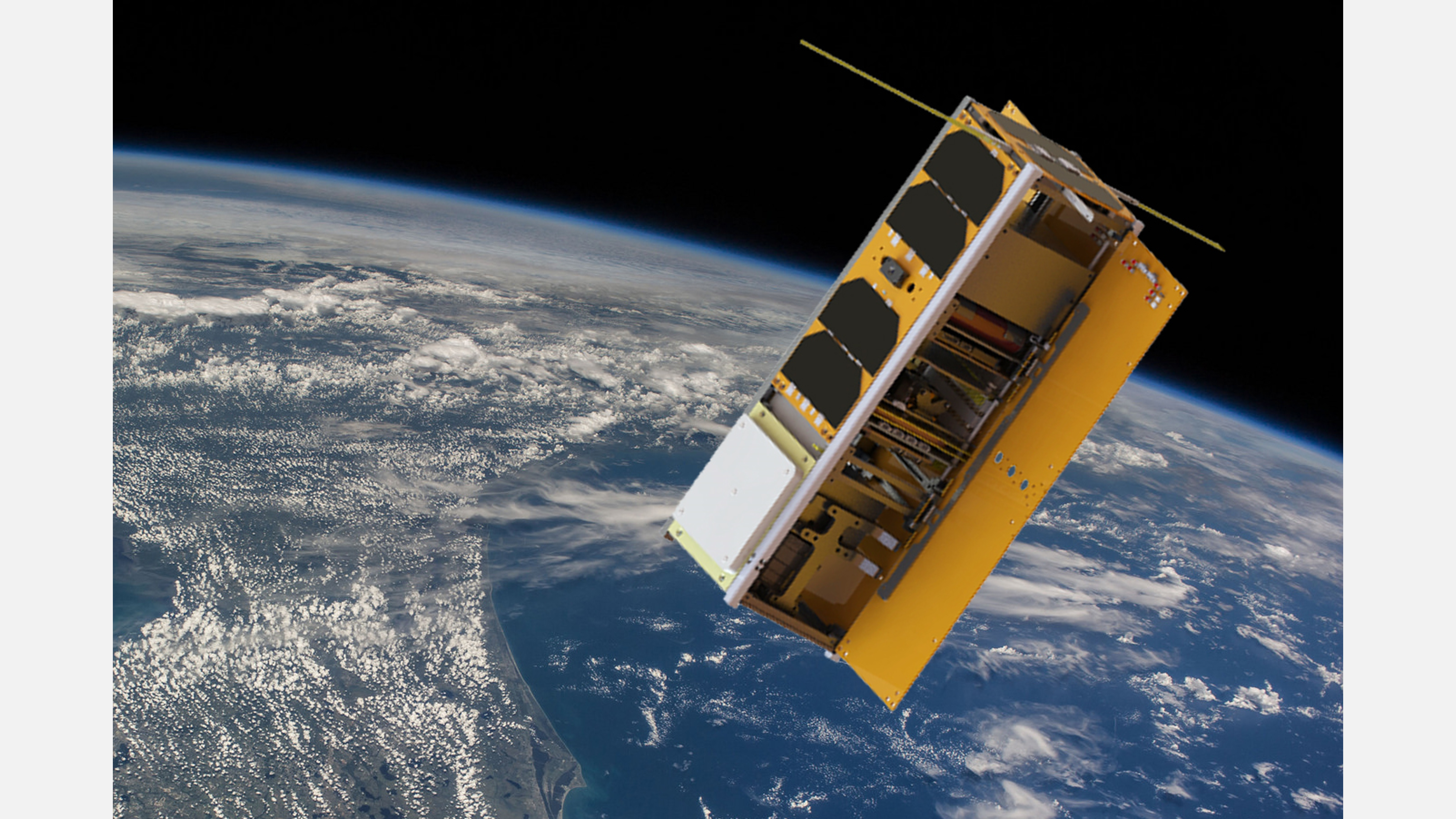CDE3301 Projects for January 2025 and August 2025 semesters
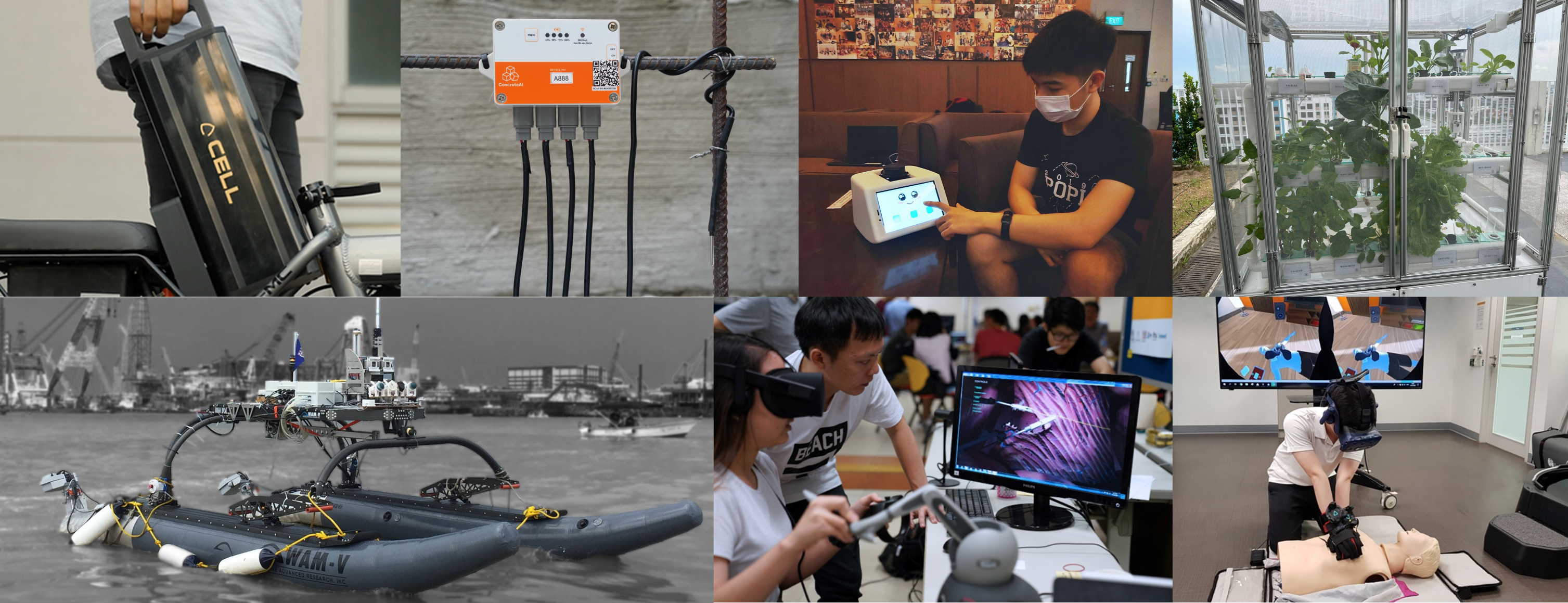
CDE3301 Ideas to Proof-of-Concept is a two-semester project course which focuses on conceptualisation, implementation and realisation of a product solution to solve an identified problem while providing experience in an integrated product design and development process where technology plays a central role. Through lecture classes, studio sessions and an open-ended project, students learn how to create a product idea to address a problem of interest, generate and evaluate concept designs, and build proof-of-concept prototypes for user testing. Students also learn how to work in a multidisciplinary team and with various stakeholders.
Find out more about course, the staff/industry-proposed projects, and student-proposed projects that will be offered for the next run of CDE3301 in the January 2025 and August 2025 semesters. Everyone is welcome to enrol in this course!
CDE3301 project selection exercise
The project selection exercise is now open until 25 November 2024. Submit your response via this form:
https://forms.office.com/r/iRUAc1MMaf
Students can select 5 options for the thematic studios and rank their choices in order of preference, while those who intend to pursue a self-proposed project will need to form their own team of 3 to 5 students (with at least 2 different disciplines) and have at least one faculty member who is willing to supervise their project.
CDE3301 Project Fair
Missed the CDE3301 Project Fair that was held on 30 October 2024? Watch the recording of the overview of CDE3301 and projects offered here:
Projects in Thematic Studios
Projects in similar areas are grouped into thematic studios in CDE3301, with each studio having problem statements from various industry partners. Find out more about these studios and the projects that will be offered under each studio.
This studio explores problems to improve productivity in the manufacturing and logistics sectors, as well as enhance efficiency in rehabilitation. Project partners in this studio include SIMTech, CEVA Logistics, and Clemvision. Projects in this studio include adaptive grasping strategies with a reconfigurable gripper, non-camera tracking solution for logistics warehouse, and automated AI assisted rehabilitation equipment.
In this industrial automation studio, students will tackle real-world challenges faced by various industry partners such as CEVA Logistics and Arianetech. Projects in this studio include automation of product feeder for robotic kit assembly, kitting automation design for soft packaging or boxed items, and automated transplanting or seedling system for hydroponics.
With the advent of spatial audio and 3D audio effects, smart speakers now have the ability to use advanced algorithms and audio processing techniques to place sounds in different parts of a room, creating immersive audio landscapes. In this studio, we will work with renowned audio technology company Bang & Olufsen as well as faculty members and students from the NUS Division of Industrial Design to explore precise positioniong and other technologies such as flexible electronics, electronic fabrics, and innovative mechanical designs to design and test new listening experiences.
Industries such as aviation and oil and gas face significant challenges in sustainability and operational efficiency, with many processes still reliant on manual labour. This studio aims to leverage digital technologies such as IoT, digital twins, and automation to enhance safety, streamline operations, and minimise waste.
This studio is dedicated to exploring challenges and opportunities at the intersection of immersive technologies, generative AI and large language models (LLMs). The studio investigates current limitations of VR/AR simulation systems used in medical and aviation training, designs new ways to make them more immersive and effective and explore new use cases.
In this studio, students will work on projects as part of a collaboration with a hospital. Paediatric care is an integral part of child development. Students can expect to work on projects to improve outcomes for children and family through innovation.
In this studio, students will learn how to create innovative medical technologies to meet the needs of clinicians following the Biodesign methodology which encompasses a thorough analysis of a clinical need, careful selection and evaluation of possible solutions, and development of a proof-of-concept prototype.
In response to the increasing mental health issues faced by today's youth, National Gallery Singapore has developed a mental wellness programme for adolescents aged 13 and up, Strength Through Art (stART), a six-session resilience-building, art exposure programme focused on developing visual and emotional literacy. Working together National Gallery Singapore, this studio will explore solutions that can reach a larger number of users for stART using emerging technologies while achieving scalability and accessibility.
The integration of innovative technology in cultural heritage sites, such as virtual audio-visual reconstructions, has become a prevalent approach to enhance the communication and perception between these spaces and their visitors. This studio explores the development of a platform that uses immersive reality and advanced hardware (e.g. wearable and tangible devices) to explore and create immersive cultural heritage experiences.
This studio consists of projects from industry stakeholders which can benefit from Industrial Revolution 4.0/5.0. This includes: the (1) automation of tasks in their daily operations thereby increasing productivity, (2) collaboration between humans and machines, and (3) explore how technologies in Artificial Intelligence, Vision Based Systems, and Embedded Systems can be deployed in new use cases.
Space Systems Studio aims to bring together like minded people to solve deep technical projects related to space systems. The studio also aims to get students connected with people in the industry and aims to give them a head start for a career in the local space industry.
With significant environmental and economic benefits, many organisations are actively exploring ways to achieve circularity. This studio explores problems in sustainability by creating solutions to promote circularity and improve the efficient use of natural resources that can also lead to creation of new jobs and commercial opportunities for businesses.
Student-proposed Projects
Interested to work on projects proposed by your peers? Find out more about these student-proposed projects and get in touch with the proposers if you are keen to join them!
Project proposer: Ong Tian Gui Givson (givson@u.nus.edu)
As Singapore’s aging population continues to grow, dementia has become a pressing public health issue, with 1 in 10 individuals over the age of 60 affected. A common challenge faced by dementia patients is disorientation and wandering, which often leads to individuals getting lost, posing safety risks and adding stress for caregivers. There is a critical need for solutions that address both cognitive decline and safety while maintaining the dignity and independence of elderly individuals.
This project aims to design a series of dignified accessories that support reorientation therapy and decision-making training for elderly patients with early-onset dementia. These accessories will help individuals stay oriented within their environment and assist in making decisions about daily activities and routines, reducing the likelihood of disorientation and wandering. The focus is on creating tools that are non-intrusive and enhance the sense of independence for the elderly, while also being aesthetically pleasing and easy to use.
Additionally, the project has the potential to scale beyond individual accessories. There may be opportunities to explore collaborations with healthcare professionals, technology experts, or dementia care organizations to design a broader framework for reorientation therapy and cognitive decision-making training. By partnering with a collaborator, the project could expand into a more comprehensive, multi-faceted programme that combines therapy with cognitive training tools, making it applicable across different care settings.
Deliverables include functional prototypes of these accessories, validated through user testing, that can be integrated into dementia care programmes. Exploring potential collaborations would further enhance the scalability and impact of this project, allowing it to contribute meaningfully to dementia care on a larger scale.
Project proposer: Justin Seow (e1121562@u.nus.edu)
This project aims to develop a low-cost and portable robotic surgery control system, similar to the control system used in Da Vinci 5 surgical robot. The main goal is for medical students and doctors to have a practice station for surgery at home, similar to how some people have truck driving simulators at home. This project will explore more intuitive and ergonomic ways to control a robotic surgery arm using the control system we will develop.
Project proposer: Prakash Siddhi Ganapathy (e1186309@u.nus.edu)
Analog Neural Nets can be an elegant way for implementing AI/ML algorithms in cases that require high levels of parallelism, high power efficiency, high speed, as well as interfacing with analog sensor components (e.g. edge computing applications). However, challenges with design (flexibility, scalability, time and complexity) limit its implementation. A high level synthesis tool, which would abstract Analog Neural Net design allowing the designer to focus on architecture and functionality rather than circuit details, could streamline the design process making it more accessible and affordable. While there are existing solution for HLS for general analog circuits, as well as for highly specific Analog Neural Nets, this project would work to bridge the gap between the two and work on a HLS tool for a general Analog Neural Net design.
Project objectives
- High level abstraction: the tool would allow designers to describe the neural network in terms of standard neural network parameters (e.g. layer types, number of neurons, activation functions).
- Modular scalable design: the HLS tool would enable the modular construction of neural networks, allowing individual components (e.g. neurons, layers) to be reused or reconfigured without requiring a complete redesign.
- Optimisation algorithms: the tool would include optimisation routines to automatically balance trade-offs such as power consumption, speed, and area.
- Automated circuit generation: the HLS tool would convert the high-level description into a detailed analog circuit design, generating schematics that can be implemented using traditional analog circuit components (e.g., operational amplifiers, transistors, capacitors).
Project proposer: Annanya Vishwanath (e1137037@u.nus.edu)
This project addresses a challenge in the live entertainment industry, where lighting technicians face significant time constraints during show preparation. With 68% of technicians reporting insufficient programming time and venues spending 12-15 hours on light programming per show, there's a clear need for automation assistance. This project aims to develop a modular, audio-reactive lighting system that utilises dry run sessions to generate lighting cues in advance, reducing the need for on-the-spot programming.
This project stems from personal experience performing at live band events with complex lighting. Band members typically fill out forms for lighting cues, a tedious process that can take about 45 minutes per song. Given the $11.5B industry's challenges, including a 40% reduction in setup time and a 45% report of technical issues, the need for a more efficient solution is evident. Studies show that 82% of technicians struggle with time management, 75% need better pre-programming tools, and 90% are interested in AI assistance.
The objectives of this project are to enhance synchronisation between music and lighting, provide dynamic and responsive lighting based on the instruments and create a modular system which can be integrated with most DMX systems.
The project will develop a modular system that includes:
- Audio Input Module: captures live audio from a mixer during dry run sessions.
- Signal Processing Unit: processes the audio signal.
- Audio Analysis Algorithm: analyses music features (beat detection, mood analysis) during practice.
- Lighting Setup Mapping: maps existing lighting setups in the venue.
- Lighting Recommendation Engine: generates real-time lighting suggestions based on dry run data.
- User Interface: allows control and customisation for technicians.
- Integration Plan: develop a strategy to integrate the system with existing lighting control systems.
Project proposer: Chang Shu Kai (e1309972@u.nus.edu)
The project involves a specialised FOUP equipped with a PLC, HMI, and router, designed to be carried by an automated material handling system (AMHS) from Muratec. This foup will inspect the overhead cables that provide wireless charging for the AMHS. The AMHS will be modified to include a laser sensor, temperature sensor, and barcode scanner etc, all connected to the foup for data collection and transmission to a server for further analysis. The primary objective of the project is to ensure that the overhead cables are functioning properly, preventing any malfunctions that could lead to crashes or falls of the AMHS.
Project proposer: Tejashri Srinivasan (e1186222@u.nus.edu)
Low-Earth orbit (altitudes below 2,000 km) is becoming increasingly congested, with SpaceX's Starlink constellation currently featuring around 6,000 satellites and Amazon's Kuiper Systems planning to launch thousands more. According to the ESA's Space Debris Office, of the approximately 12,900 satellites launched since the beginning of the Space Age, over 60% remain in orbit, and more than 30% of those are no longer operational. These non-functioning satellites drift uncontrollably until gravity and atmospheric friction eventually pull them back toward reentry and immolation, a process that can take years or even decades. The longer these satellites remain in orbit, the higher the risk of collisions with other defunct satellites or debris. To ensure the sustainable use of low-Earth orbits, it is essential for spacecraft and rockets to de-orbit after completing their missions. Among various proposed solutions to mitigate space debris, drag sails offer a particularly straightforward approach. These synthetic sails are deployed from a spacecraft at mission completion to increase drag, thus facilitating a quicker de-orbiting process. Since drag sails operate passively by relying solely on atmospheric resistance, they provide a promising solution for defunct satellites/ satellites reaching end-of-life.
The primary objective of this project is to design and develop a deployable drag sail system that will enable a 2U CubeSat to safely and predictably de-orbit at the end of its operational life. The drag sail will passively increase atmospheric drag on the CubeSat, accelerating its orbital decay and ensuring it re enters Earth's atmosphere in compliance with international space debris mitigation guidelines. We plan on developing a modular, compact drag sail that is lightweight, and can be easily mounted on to the CubeSat.
Project scope
- Design and folding of the drag sail: Selection of suitable materials, sail shape, and surface area calculations for effective drag production. Also experiment with origami folding techniques to ensure that the overall product is compact. (Sail material, shape, thermal considerations, folding techniques).
- Deployment mechanism: Development of a compact, reliable deployment system that can fit within the 2U CubeSat’s structural constraints. (Design deployment mechanism, ensure that the sail unfurls evenly without tangling).
- Mounting system: Designing a lightweight and sturdy mounting system/ container, to mount the drag sail onto the cubesat. (Mounting points, stowage, sail protection)
- Deployment + Telemetry communication to ground station once deployed Deployment (trigger, confirmation of deployment- send data to the OBDH which sends it back to the ground station).
- De-orbit simulation: Run simulations to predict how fast the CubeSat will deorbit based on the sail’s size, shape, and altitude. (GMAT, Matlab, STK etc).
- Testing: Thermal testing to ensure it remains functional across extreme temperatures seen in space, vacuum testing to ensure the sail deploys correctly in the absence of atmospheric pressure, vibration tests to ensure the mechanism can survive intense vibrations during launch, tumbling etc.
Project proposer: Manashree Krishnan (manashree.krishnan@u.nus.edu)
The aim of this project is to reduce waste generated at grocery stores, especially mom and pop stores, by making packaging material out of grocery waste. Ideas that can be explored include bioplastics that can be made from grocery store waste.
At the same time, the project need not be limited to packaging material. It could range from just simple food up-cycling into other food items (e.g. using food science techniques like fermentation, freezing, dehydrating to create useful products) to maybe even trying to trying some high-tech up-cycling like packaging material.
Project proposer: Koh Jye Sheng, Zenson (e1121603@u.nus.edu)
Do you know that Singapore is one of the world's greatest consumers of single-use plastics? Yet, in 2022 the domestic plastic recycling rate in Singapore is only about 6%. The vast majority of plastic waste are incinerated, with the incineration ash buried at Pulau Semakau that is expected to be fully filled by 2035.
While many organisations such as hotels and food and beverage operators are aiming to stop giving out plastic bottled water in favour of getting more patrons to switch to their own reusable bottles, plastic bottled water is still needed in many different settings because of its convenience and utility. Even though there are already other alternatives to single-use plastic water bottles such as beverage cartons, they may be less eco-friendly compared to plastic bottles. This is because they are not generally not recyclable due to their multi-layered design (comprising paper, plastic, and aluminium). Advances in recycling technology can improve the recyclability of beverage cartons, but very few facilities are equipped with such technology.
Thus, this project aims to develop solutions that can help with the transition from single-use plastic water bottles to more sustainable options without sacrificing convenience and functionality. Such solutions may comprise a synergistic closed-loop system in which the bottles are designed with minimal materials and carbon footprint.
Project proposer: Neha Rajan (neha.rajan@u.nus.edu)
The aim of the project is to build a technology for medical waste in order to prevent contamination of the environment and mitigate antimicrobial resistance. The project will explore methods that are able to use material separation techniques to treat medical waste before disposal. This project has both environmental and commercial implications as it serves to enhance sanitation and reduce the constant need for new drugs due to antimicrobial resistance.
Project proposer: Parv Bhadra (parv@u.nus.edu)
The aim of this project is to design and develop a mobile, self-sustaining communications and EW network that can be rapidly deployed in challenging environments. The network will rely on autonomous unmanned ground vehicles (UGVs) operating in a coordinated swarm, providing reliable communication links and EW capabilities in both natural disaster response and military operations. These UGVs will establish a network that is adaptable, easy to deploy, and can cover wide areas without the need for pre-existing infrastructure.
Project proposer: Chakraborty Basudeb (e1303027@u.nus.edu)
VetBuddy is an innovative solution designed to enhance veterinary practices through AI-driven technologies. With a significant number of postmortem investigations revealing that 65% of deceased pets experienced a misdiagnosis, VetBuddy aims to address this critical issue by providing veterinarians with real-time prescription suggestions, comprehensive drug interaction checks, and an integrated universal health record system. Our focus is on streamlining clinical workflows to improve treatment precision across Asia’s rapidly growing pet care market.
The platform will empower veterinarians to quickly access relevant, research-backed information, view a patient’s full medical history, and assess the viability of treatment methods. By integrating AI technologies, VetBuddy not only simplifies the decision-making process but also enhances the quality of care provided to pets, fostering healthier pets and happier veterinarians.


